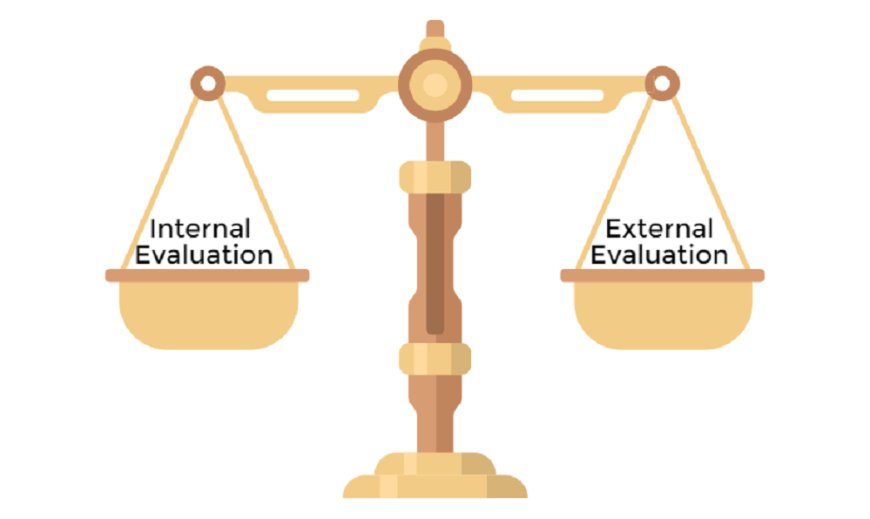Recommendations for students to pass the external evaluation
advance. And how best to cope with this task, this material will tell you. Recommendations for students to pass the external evaluation.

In order for you to be able to confidently cope with the test in a stressful EIT environment, start preparing for the test in advance. And how best to cope with this task, this material will tell you. Recommendations for students to pass the external evaluation.
Train. Before the official testing, you should perform as many published tests as possible - just for the sake of training, for example, to take external evaluation tests online. You can't learn to perform tests well without training on them yourself, substituting this practice for other types of control and self-control. These trainings not only introduce you to the typical designs of test tasks, but also give you another experience - self-observation and optimal self-regulation during testing.
Hurry up. Train with a stopwatch in hand. Compare the time required to perform external evaluation tests. Limit it. Without such limitations, which force to work at the fastest pace, without simulating a competitive situation, it is impossible to simulate the stress (tension) that causes any testing.
Try it. In training, use the right tactics, follow all the recommendations on how to solve a particular task or test as a whole. For example, you should not re-read obscure instructions twice, but should immediately get acquainted with the answer options. Then the content of the answers will clarify to you what exactly is needed in the instructions for this task. This is a specific example of a tactic to try. It can be mastered and used effectively only by actively training in testing.
Skip it. We must learn to miss difficult or incomprehensible tasks. Remember: there will always be tasks in the test that you will definitely be able to handle. It's just unwise not to score points just because you didn't get to "your" tasks, but got stuck on those whose training material is unknown to you. Of course, such tactics may not always succeed. If the test is built on the principle of "stairs" and begins with easy questions, you should not miss all the first tasks.
Guess what. If you are not sure about the choice, but can intuitively prefer an answer to others, then intuition is worth trusting! Such trust, as a rule, leads to an increase in points.
Turn it off. Many problems can be solved faster if you do not look for the right answer at once, but consistently exclude those that are clearly not suitable. The exclusion method allows you to focus on just one or two answers (which is easier), rather than five or seven (which is much more difficult).
Must Read: Muscle strain: why does it appear?
Reduce the choice. If several answers (1-2) out of four or five options seem completely inappropriate to you, and others are suitable with equal probability, then in this case it would be better not to skip this task, and try to choose the answer from others simply at random. By following these tactics you will get more points. This is probability theory. After all, "negative knowledge" (about which answer is not exactly appropriate) is also knowledge, and it is unwise to refuse to use it.
Think only about the current task. When you see a task (question), forget everything that was in the previous one: as a rule, the tasks in the tests are not related to each other, so the knowledge you applied in one (already solved by you) usually does not help, but only interfere with concentration and correctly solve another problem. This setting gives an invaluable psychological effect - forget about failure in the last task (if it turned out to be "out of your teeth"). Just think that each new task is a chance to score points.
Read the task to the end. Hurry should not lead to the fact that you will try to understand the conditions of the task on the "first words" and complete the limb in your imagination. This is the right way to make annoying mistakes in the easiest questions.
Do not be sad. There are tasks in any professionally prepared test that you simply will not be able to cope with. Moreover, all 100% of the tasks can be performed only by one! Therefore, there is no point in squandering emotional energy on premature annoyance. Even if you think you made too many mistakes and just failed the test, remember that very often this feeling is wrong: when comparing your results with others, it may turn out that others made even more mistakes. As a result, you get if not the highest test score, then quite decent. This setup will be especially useful for "round excellent students" who are accustomed to achieve the maximum result with conventional control methods. If you want to become a great "test fighter", learn not only to strike, but also to "hold" them (in terms of boxing). It is necessary to categorically abandon the "excellent complex", which is not accustomed to enduring certain local failures.
Schedule two rounds. Plan the average time for each task so that two-thirds (maximum three-quarters) of the test passes all the tasks "in the first round." Then you will have time to score maximum points on easy for you ("their") tasks, and then you will be able to think and get something on difficult, which you first had to miss.
